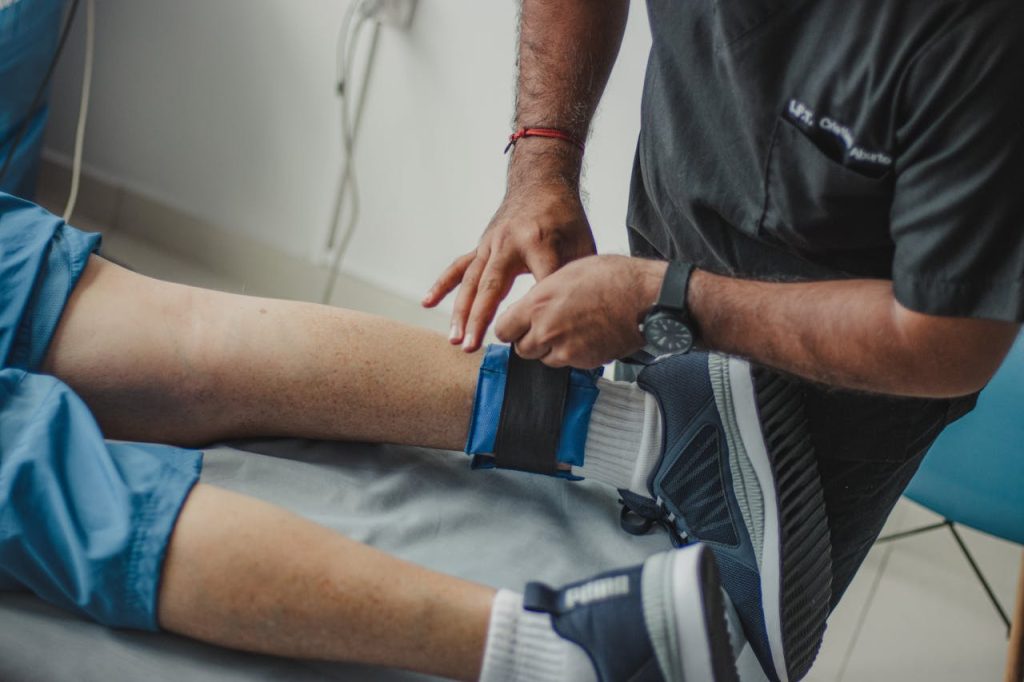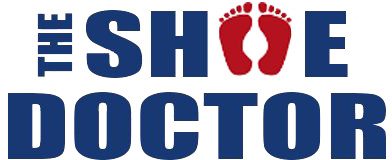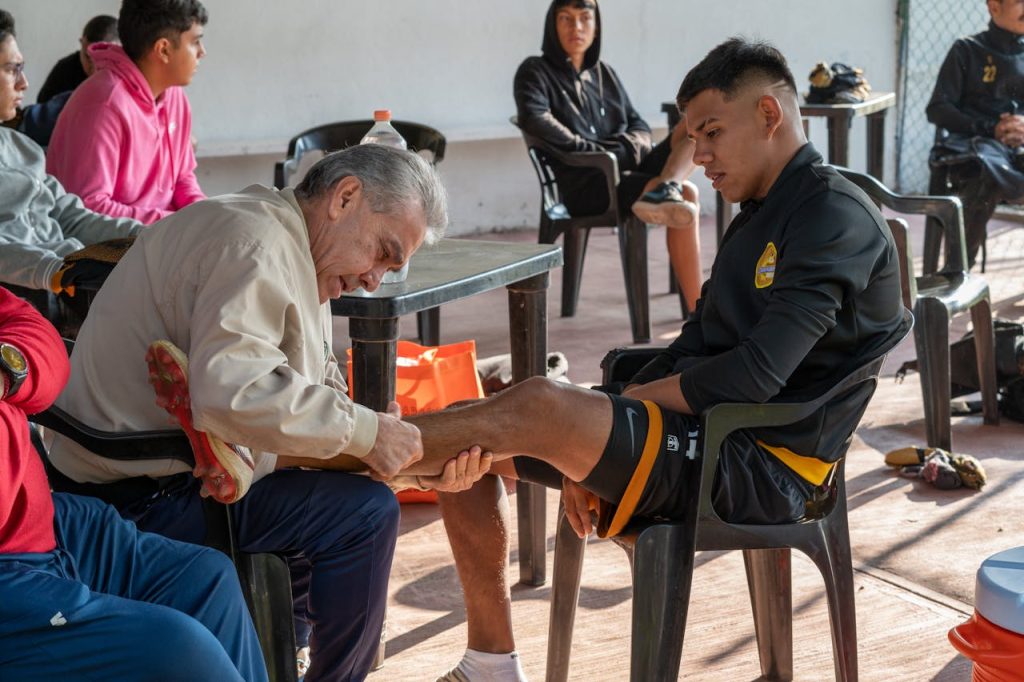Every day, millions of adults ignore subtle signs of poor gait—uneven shoe wear, sore arches, swollen feet—brushing them off as minor discomfort. But walking on hard concrete or standing all day takes a toll, especially when gait issues go uncorrected. Without proper support, joints wear down faster and muscular imbalances take hold, leading to chronic pain in the feet, knees, hips, or back. Skipping gait correction orthotics might seem harmless at first, but the long-term effects can interfere with your ability to work, stay active, or simply move comfortably. Taking action early can make all the difference. Let’s look at how small adjustments now can lead to big improvements over time.
Key Takeaways
- Ignoring gait problems or skipping orthotic support can cause chronic pain, joint degeneration, and muscle imbalances that worsen over time.
- Early intervention with professional gait assessment and custom orthotics can help prevent long-term complications such as arthritis and mobility issues.
- The truth is, if you have poor gait mechanics, you’re going to start having issues with posture and balance. This increases the likelihood of falls, particularly among older adults in the United States.
- Trusting in one-size-fits-all insoles or quick, band-aid solutions aren’t going to address the underlying causes of gait dysfunctions. It’s a short-sighted approach that will cost the healthcare system more in the long run!
- Regularly monitoring your walking pattern and consulting a specialist when you notice persistent changes can help maintain overall health and mobility.
- By taking proactive steps, including investing in custom gait correction orthotics and exploring complementary therapies, you are helping to ensure the best movement and long-term health.
Why Ignoring Gait Problems Hurts
Read on, and learn why ignoring gait abnormalities hurts. Gait problems are not a mere footnote to your health. Without intervention, they can lead to a slow worsening of pain, potentially resulting in an unstable gait. This condition can limit how far and how often you can walk, affecting all areas of your life. Knowing the true price of neglecting gait, perfecting orthotics and personalized treatment is essential to preserving your future health.
1. The Joint Pain Domino Effect
Misalignment in how you walk, even if it seems small, starts to change the way your knees and hips move. With each step, your body compensates for these imbalances. This results in additional pressure on joints that weren’t designed to bear that weight.
Consider an active person in San Francisco who loves to walk the city, and they develop a minor foot roll. Months later, that roll can result in severe knee pain or achy hips. This is due to the fact that as the body compensates by readjusting its entire movement pattern, it can often cause one weakened area to affect multiple others.
Early intervention, such as gait analysis, can detect these changes before they develop into a critical issue.
2. Chronic Aches: An Unwanted Companion
By neglecting a gait problem, you’ll likely be facing chronic pain every day. Muscle fatigue increases as the body has to expend more and more energy just to go anywhere. The outcome is more than just achy feet, but a worn-out back or rigid shoulders.
Eventually, that pain begins to take a toll on your energy and attention. Research indicates that these orthotics can reduce symptoms while improving your mobility.
3. Posture Slumps and Balance Stumbles
Gait problems throw off your posture, causing you to be off balance and potentially unsteady on your feet. Unfortunately, this risk increases as you get older, putting you at greater risk for falls.
Balance and core-strengthening exercises can be beneficial, but the key is addressing how you walk.
4. Performance Dips: From Sports to Steps
Athletes and active individuals might experience a decrease in performances from deficient gait. Many common sports injuries, such as a sprained ankle or strained knee, can usually be attributed to improper walking or running mechanics.
Restoring peak performance through gait training gets you back to your best. Whether you’re training for the Bay to Breakers or just attempting to outpace a hectic day, it helps!
5. Hidden Dangers: Beyond Sore Feet
Gait issues can be a clue to bigger health problems, such as nerve or muscle disease. Ignoring these signs can delay the right treatment.
Small shifts in your step can lead to big changes in body motion, which can raise the risk for falls and lower your overall quality of life. Getting a careful visual gait check from a skilled expert can catch these problems early.

The “Wait and See” Pitfalls
The “wait and see” approach that’s typical for small gait abnormalities. This holds particularly true in the Bay Area, where hectic work schedules and fast-paced lifestyles are the way of life. That might be true for some, but this isn’t the right approach.
These simple things—like meniscus tear pain, which typically gets better in a few weeks. When symptoms last—four to six weeks or longer—the hazards increase. Early warning signs are missed and long-term damage begins to accumulate.
Long-Term Body Wear and Tear
With gait abnormalities, the cumulative mechanical stress on musculoskeletal tissues is exacerbated. Every single step, mile after mile on concrete urban roadways or rural sidewalks, adds increasing stress on joints such as knees, hips and spine.
This can increase wear and tear on the body, resulting in chronic pain or overuse injuries. When not addressed, body mechanics change, resulting in difficulty performing even the most basic movements. Routine gait examinations allow clinicians to catch subtle issues before they become huge.
Inviting Early Onset Arthritis
An improper gait puts the improper type of stress on your joints. This might cause arthritis to show up decades early. When misaligned movement patterns lead to uneven joint wear, cartilage breakdown can happen more quickly.
Maintaining proper alignment of feet, legs, and hips is essential to avoid joint pain. Custom orthotics are clinically-proven to reduce joint impact, an important step in slowing or even halting the progression of joint deterioration.
How Muscle Imbalances Develop
Poor compensation due to abnormal gait can further disrupt muscle balance. As time passes, certain muscles become tight and sore while others grow weak and limp.
This results in a loss of mobility, stiffness, pain, and restricted balance. This is where stretching, strength work, and targeted exercises to address muscle imbalances come into play. Addressing gait and muscle issues at the same time is critical for long-term success.
The Ripple Effect on Overall Health
The effects of gait issues extend well past the feet. Poor movement habits make walking and other forms of exercise more difficult and can contribute to weight gain and cardiovascular risks.
Timely, comprehensive, interdisciplinary treatment allows individuals to maintain their mobility, functionality, and autonomy longer.
Why People Skip Gait Correction
For urban dwellers in cities such as San Francisco, these reasons may sound trivial but quickly stack up to be why people skip gait correction. This leads many to believe that foot pain or abnormal gait is simply a part of life. Others think that these issues are self-correcting in the long run.
Still others may be intimidated by the cost of medical appointments or the expense of orthotics, which in itself can be in the hundreds of dollars. Some simply don’t want to invest the time required for multiple appointments, fitting, and follow-up.
For one thing, most people are unaware of gait at all. They don’t realize the toll it takes on their knees, hips, and back.
Common Reasons for Avoiding Help
Many people procrastinate addressing their gait issues. They think they don’t have time, or that it’s not worth addressing. In metropolitan areas, whether a sunbelt city or a snowbird getaway, the quick tempo pushes wellness to the bottom.
For others, they are embarrassed by their foot problems or believe that orthotics are only for seniors. Online misinformation compounds the problem, as thousands more are misled to believe that walking funny is okay or safe.
Proper education has the power to overcome this, but simple, clear, factual information isn’t always straightforward to come by.
The Myth: “It Will Fix Itself”
Many people believe that gait problems will just disappear. That’s simply inaccurate. When we wait, pain only worsens and may even cause damage to joints due to improper movement over time.
Prevention, such as an early podiatrist check-up, leads to improved outcomes and quicker resumption of normal gait.
What You Miss Without Proper Support
Orthotics prevent and correct gait abnormalities, improving the walking experience. Without proper support, minor discomfort can lead to major injuries.
Quality shoes and custom orthotics distribute pressure and relieve tender areas. A one-size-fits-all solution isn’t going to cut it. For one thing, every foot is unique.
My Thoughts: Short-Term Saves, Long-Term Pains
Cutting assistance may save funds in the short term, but creates long-term fiscal pains. These minor changes to address gait today equal less money spent on physician payments in the future.
Paying attention to foot health can go a long way towards keeping Americans on their feet—for a lifetime.
Custom Orthotics: Your Best Solution
Reasons to Choose Custom Orthotics
Among all the options available in the field of foot care, custom orthotics provide specialized support for gait issues. Unlike generic, one-size-fits-all products, custom orthotics are made from a mold of your foot and for your particular needs. They’re not just making your steps cushy—they’re correcting the way your feet and ankles strike the ground.
This helps you avoid unnecessary stress on your feet and other joints. In doing so, it can prevent new pain from developing or prevent existing pain from worsening.
Off-the-Shelf vs. Custom Support
Popular drug stores offer these over-the-counter orthotics. These are simple to pick up but more often than not they just don’t cut it when it comes to providing adequate support. They can’t accommodate your arch or address problems such as flat feet or bunions.
Research, such as the 2009 study on custom orthotics, indicates that over-the-counter insoles are less effective at addressing serious issues. Custom orthotics, made from precise casts and often made from materials such as graphite or Neoprene, provide focused relief.
As a result, they produce superior outcomes for plantar fasciitis, arthritis and other ailments. It even prevents pain in your knees or back that’s related to your gait!
The Real Power of Personalized Fit
The bottom line: a proper fit truly impacts everything. Through this process, makers cast to achieve a precise impression of your foot in its neutral position. This step is important for ultimate comfort and function.
It takes years of experience to get this right. With custom orthotics that fit your anatomy and gait pattern, you can expect to experience reduced pain and increased mobility.
How Custom Inserts Correct Your Stride
Properly designed custom inserts will keep your feet moving as they should. They help distribute pressure evenly, improve your overall balance, and help your stride become more stable and fluid.
For many, they translate to less pain while going about their daily lives and more confidence with each step.
Why I Believe Custom is Crucial
Custom orthotics do more than provide immediate relief; they can prevent more serious issues like gait abnormalities down the road. They’re an intelligent, effective, and time-honored prevention strategy that helps you avoid foot discomfort and joint pain before it starts.
Take Control of Your Movement
Controlling your gait health is an active, involved endeavor, but it has the power to determine your everyday comfort and long-term mobility. Many people in the Bay Area spend long hours on their feet, between commuting, walking city hills, or working in healthcare or tech. Gait dysfunctions can render even these normal tasks impossible, leading to a greater risk of fatigue or pain.
Looking to get more T4America updates and insights? Frequent consultations with a gait specialist or physical therapist will allow you to identify small deviations before they become major issues.
When to See a Gait Specialist
Less obvious symptoms such as a minor limp, foot drop, or loss of balance can indicate that it’s time to visit a specialist. It is crucial that people get help early. Preventing a slight imbalance due to inner ear degeneration or arthritis, for example, can prevent more severe issues down the line.
Collaborating with a physical therapist leads to a personalized rehabilitation plan. Include strength exercises for your lower body and core to make sure you’re getting the treatment that’s right for you! Don’t delay if minor gait issues persist. Treating them early may avoid chronic pain later.
Understanding Your Gait Analysis Results
What does a gait analysis do? A gait analysis is a comprehensive look at how you walk. You’ll learn things like how much your weight shifts from side to side, or if one of your feet moves in an unusual way.
Understanding these truths allows you and your healthcare provider to make informed decisions about appropriate treatments, such as custom orthotics for flat feet. The better informed you are, the better you will be able to advocate for yourself.
Early Action Means Better Outcomes
Early action means better outcomes. As just one example, sensorimotor exercise interventions can slow the rate of mobility loss in people with Parkinson’s by nearly half. Early intervention provides for quicker, more complete healing.
Ignoring alterations in your gait can lead to issues.
Beyond Orthotics: Complementary Therapies
Therapies such as physiotherapy and diverse walking exercises—particularly following a stroke—can help you advance. Integrating core and balance exercises allows orthotics to be more effective.
Complete care involves experimenting with a variety of interventions until you find the right combination that works.
Conclusion
Ignoring gait problems can trigger a chain reaction of pain—from sore feet to aching knees and a tight back. In a city like San Francisco, where walking is part of daily life, these issues can worsen quickly. Custom orthotics help by realigning your gait and reducing joint strain, preventing long-term damage. Addressing the problem early leads to better mobility and faster recovery. To stay active and pain-free, consult a foot specialist and find the right support for your stride.
Frequently Asked Questions
What is gait and why does it matter?
If your gait is abnormal, it can lead to discomfort in your feet, knees, hips, and back. Correcting gait abnormalities not only improves your mobility and performance but also helps you avoid injury.
What are common signs of a gait problem?
Typical symptoms of a gait abnormality include limping, uneven shoe wear, frequent tripping, or pain in your legs, hips, or lower back. If you’re experiencing these signs, it may indicate a need for correction in your walking patterns.
What happens if I ignore gait issues?
Ignoring gait abnormalities can make pain worse over time, leading to lifelong damage and joint deterioration, which increasingly interferes with your ability to walk around San Francisco’s steeply-sloped neighborhoods.
Why do people skip gait correction orthotics?
Many individuals believe that foot orthotics are expensive or ineffective, often delaying treatment for common gait problems. This misconception can lead to worsening gait abnormalities, as issues rarely resolve on their own.
Can custom orthotics really help my gait?
Yes. Can custom orthotics really help my gait abnormalities? They’re specifically made for you, which provides a world of difference in addressing common gait problems, especially if you live an active lifestyle in the Bay Area.
Are gait problems only caused by foot issues?
Gait issues may originate at your feet, but they can be caused by various foot conditions such as an injury, arthritis, or even poor posture. A professional evaluation is essential to address any gait abnormalities effectively.
How do I know if I need custom orthotics?
If you have ongoing pain, uneven shoe wear, or trouble walking up and down San Francisco’s hills, custom orthotics can help address common gait problems. A podiatrist can thoroughly examine your gait mechanics and advise you towards the best possible solution.
Walk Better, Live Better: Find Balance With Gait Correction Orthotics From The Shoe Doctor!
If joint pain, poor posture, or recurring injuries are slowing you down, gait correction orthotics could be the key to realigning your stride, enhancing comfort, and restoring your confidence. Imbalanced gait patterns often lead to foot, knee, hip, and back issues that affect your everyday mobility and long-term health. Our custom orthotics work to stabilize foot mechanics, distribute pressure evenly, and correct imbalances—supporting proper alignment from the ground up so you can walk tall and pain-free.
At The Shoe Doctor, we bring over 20 years of expertise in designing high-performance orthotics tailored to your body’s biomechanics. Russell uses advanced 3D foot-mapping technology to analyze your unique gait and foot structure, ensuring each orthotic is meticulously crafted for optimal support and function. We take a comprehensive approach to gait correction—addressing root causes, not just symptoms.
If you’re in the South San Francisco Bay Area, trust The Shoe Doctor for personalized gait correction orthotics that align your steps and protect your future. Schedule your complimentary consultation today and take the first step toward smoother, stronger movement!
Disclaimer
The materials available on this website are for informational and entertainment purposes only and not to provide medical advice. You should contact your doctor for advice concerning any particular issue or problem. You should not act or refrain from acting based on any content included in this site without seeking medical or other professional advice. The information presented on this website may not reflect the most current medical developments. No action should be taken in reliance on the information contained on this website and we disclaim all liability for actions taken or not taken based on any or all of the contents of this site to the fullest extent permitted by law.


